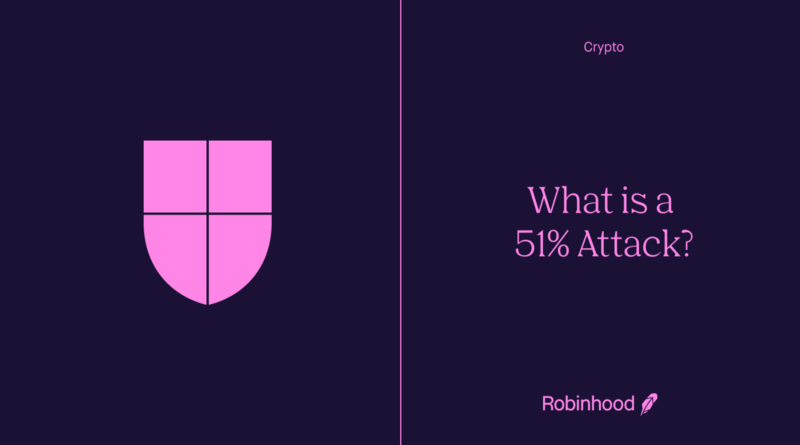What is a 51% attack?

We recently broke down what hashrate is and why it matters in keeping a cryptocurrency secure. So, what happens if a cryptocurrency’s hashrate decreases and there’s a 51% attack?
A 51% attack is when malicious attackers attempt to take over a cryptocurrency’s network by gaining control of more than half — aka 51% — of a network’s mining hashrate. If attackers gain control of a network, they can falsify new transactions, spend coins they don’t have, prevent transactions from being validated, and more.
What does hashrate have to do with it?
Some cryptocurrencies, including Bitcoin, rely on mining to secure the network and validate new transactions. Mining is the process of verifying and adding transactions to a blockchain network. In exchange for verifying and adding transactions, miners are rewarded with crypto.
Generally, the more miners participating in a network, the more difficult it is to successfully attack the network because there’s more computer power being used to process transactions. The amount of computing power being used by a network is referred to as its hashrate. You can learn more about hashrates in this article.
The fewer the miners, the lower the hashrate, and the more vulnerable the network.
How does a 51% attack work?
One way to think about this is to picture miners as voters who can approve or invalidate a transaction. If you have 100 voters in a room, 51 or more of them would have to agree for a transaction to be validated. Even if 40 of the 100 voters were malicious attackers, they would still get outvoted by the 60 other voters.
But if there were only 10 people in the room, and 6 of them were malicious attackers, those attackers would have the majority — or over 51% — of the voting power.
When malicious attackers are able to take over a cryptocurrency’s network, they can falsify new transactions, prevent valid transactions from being validated, and more.
Are 51% attacks common?
Generally, these types of attacks are uncommon because it can be prohibitively expensive to try and take over a cryptocurrency’s network.
For example, Bitcoin’s hashrate is measured in hundreds of exahashes per second. An exahash is a one followed by 18 zeros, or 1,000,000,000,000,000,000. If an attacker wanted to take over Bitcoin’s network, they would need to provide more than 51% of Bitcoin’s hashrate. The cost of the specialized mining equipment and electricity needed to do so makes it very prohibitive.
However, that’s not to say 51% attacks don’t happen. In the case of Bitcoin SV (BSV), attackers were able to momentarily take over the network in early August 2021 due to BSV’s steadily declining hashrate. Attackers were able to provide over 51% of the mining hashrate, allowing them to spend coins they didn’t have and prevent valid transactions from going through.
Cryptocurrency trading offered through Robinhood Crypto, LLC (NMLS ID 1702840). Robinhood Crypto is licensed to engage in virtual currency business activity by the New York State Department of Financial Services. Robinhood Crypto accounts are not FDIC insured or SIPC protected.